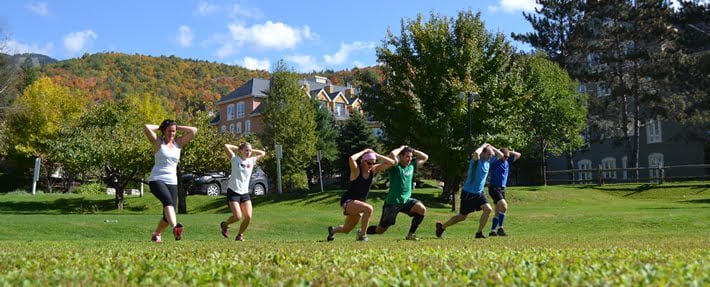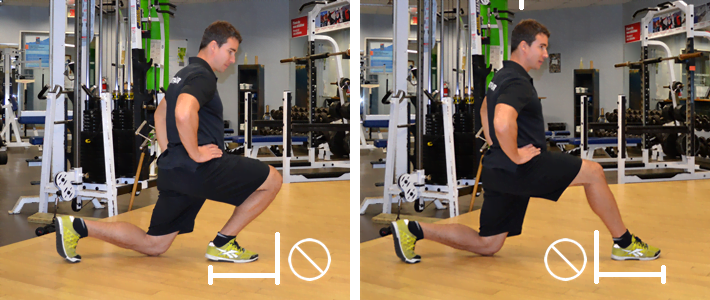
The squat is the master of all fitness exercises and beneficial for almost every sport imaginable. Definitely a great addition to your preseason ski training! However, describing a squat in an article does not do it justice. The best way to enjoy this exercise would be to get the advice of a coach on your technique so as to properly develop the movement.
Lunges, on the other hand, are much easier to describe and are complete multi-joint movements that can be learned quite easily. You’ll feel your thighs, your buttocks and your trunk strengthen pretty rapidly.
The success of a good lunge depends on two elements that must be done in conjunction … one cannot be completed without the other.
1- The step
You have to take a big step, see a very big step forward. The absolute length of the stride not only depends on your size, but on the length of your limbs. So if your partner is the same size as you, but his legs are longer yours, his step will be larger.
How to tell if your lunge is big enough? It depends on the position of your knee in reference to your foot on the ground. If the knee is ahead of the toes when you dip down, then your step is not big enough. Contrariwise, if your span is too long, your knee will remain behind your heel and it will be difficult to complete the movement.
2- The balance
As you dip down the trick is to stay balanced, all the while keeping a straight back. Avoid bending the shoulders forward while descending; the goal is to be as straight and stable as possible. Keep your shoulders slightly stretched backwards, think about dropping your back knee to the ground without putting pressure on it (keep the muscle tension active).
The exercise is to walk forward by doing lunges. The distance depends on your ability and the size of the challenge you want to impose on yourself. 100 metres is an interesting challenge!
What to do with the hands? Hands can simply be placed on the hips, but there are several ways to add difficulty to the lunges simply by placing hands on the head or right to the side. Weights can also be added: held like bags, on the back or above the head.
Walking a distance of 100 metres will never have seemed so beneficial…
Happy training!
In collaboration with Karl Britten—Trainer at Aquaclub La Source, Tremblant Resort






You must be logged in to post a comment.